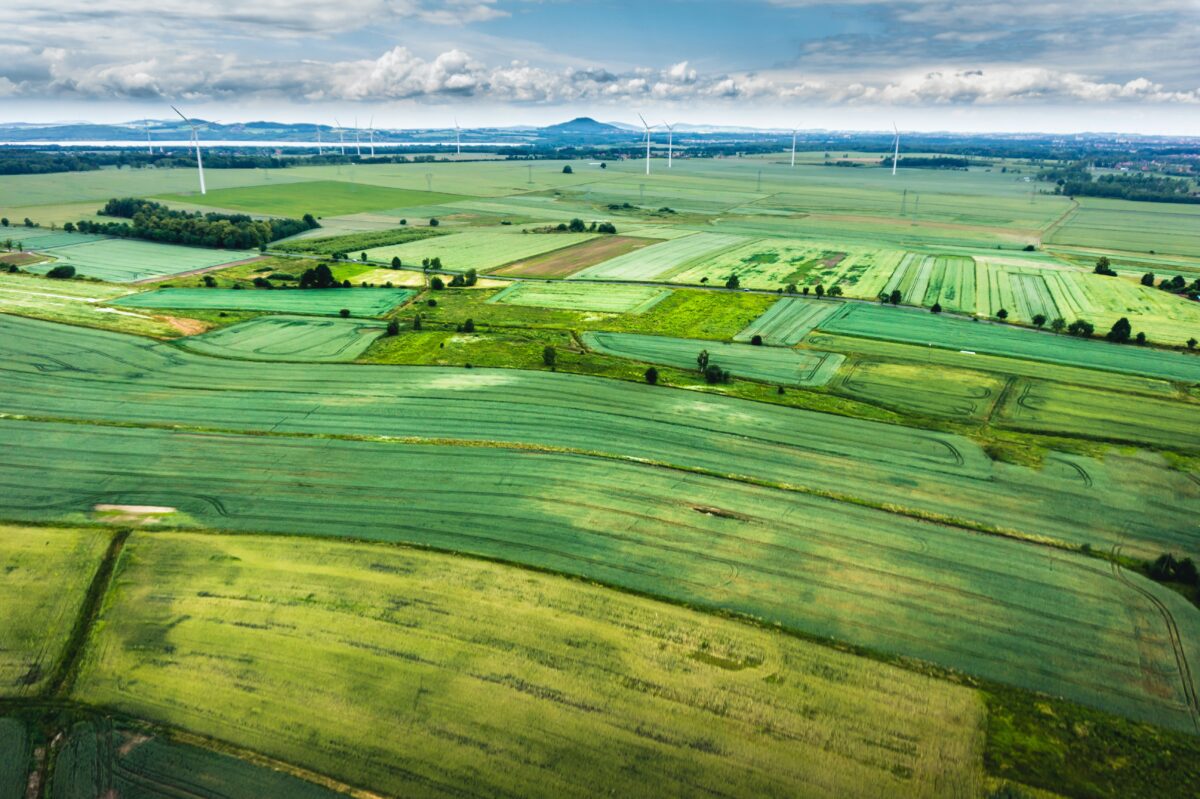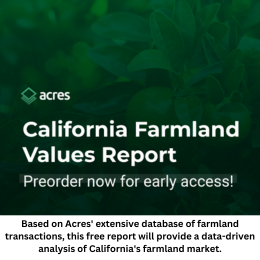April 11, 2024
By Lynda Kiernan-Stone, Global AgInvesting Media
Although farmland is a fairly new asset class – not playing a role in institutional asset allocation strategies in any major way prior to the Great Financial Crisis of 2008 – market conditions, global socio-economic and political developments, and the inherent risk-return benefits associated with farmland, among others, have been drivers behind a dynamic evolution evoking potential for a new horizon for farmland investment.
This new white paper titled The Evolution of Farmland as an Asset, released by Steve Bruere, president, Peoples Company, and Ailie C. Elmore, instructor, University of Illinois, takes you behind the curtain, not only recounting the history of farmland investment, but examining why events occurred, and how those events drove, and are continuing to drive, the development of a promising and worthy asset class.
In the early years, farmland was viewed solely as the purview of farmers and ranchers. However, there were a few prescient investment pioneers in the 1980s such as Murray Wise who founded Westchester Group (now owned by Nuveen, a TIAA Company), or John Hancock Mutual Life Insurance Company (now Manulife), who were investing amid the recovery from the 1980s Farm Crisis.
The paper turns a lens on the boom years of the 1970s when U.S. farmers were supplying drought-stricken Russia with grain – which lead to rising farm incomes and farmland values appreciating wildly – to the following decade when an acre of Iowa farmland that had been worth in $2,124 in 1981 dropped to a value of just $835 by 1987.
Then, following a period of recovery, the impact of the Financial Crisis of 2008 cannot be overstated. Between October 2007-March 2009 stock prices lost approximately 50 percent of their value, and stock market investors lost about $7.4 trillion, or $66,200 per household, from 2008-2009.
However, while equity and fixed-income markets were feeling the pain, U.S. farmland came through the recession unharmed, returning 9.2 percent on-average during the same period, according to the USDA Land Value Summary. This crisis point laid bare farmland’s negative-correlation with equities and diversification potential that had always been present, but not yet leveraged.
Thus came a boom in the formation of institutional investment funds, and with them, the launch of industry and education events such as the Land Investment Expo first held by Peoples Company in 2008, and Global AgInvesting which launched its first event in 2009.
Indeed, People’s Company is ideally suited to provide unrivaled insight into not only the historic course of the farmland investment, but how a complex web of factors, trends, and developments intersected to form a new, resilient investment class. The scale and scope of its business – working to deploy capital, broker assets, appraise farms, and manage farmland, serving non-operating landowners, large farm operators, farming families, institutional investors, family offices, high-net-worth individuals, and key referral sources, across every key agricultural region in the country – gives Peoples Company a decided ability to provide reliable, relatable, and in-depth analysis on both the historical aspect of the investment class and its great potential for the future.
Now, as the 10-year lifespan of many farmland investment funds launched in 2010-2011 are closed, and after years of appreciation and extremely impressive returns, Peoples Company posits that now is the time to optimize farmland portfolios as farmland continues to perform on par with the inflation rate, but without the volatility of equities.
As Peoples Company stated – “…there is one consistent factor always at play: regardless of what is happening in the world, people still need to eat, and farmland is quite literally the key ingredient to that.”
The long-term outlook for future returns from agricultural investment is undeniably positive. Agriculture will alway be a necessity to not only feed a growing population, but increasingly to support growing and evolving energy production systems, as well.
As the industry continues to mature and become more financially and environmentally sustainable, and as technology is further adopted and data more readily available to support informed management decisions, agriculture will continue to be key to social stability and economic growth, making now a time for expansion as we embark on the next 10 years.
You can access the white paper here.
~ Lynda Kiernan-Stone is editor in chief with GAI Media, and is managing editor and daily contributor for Global AgInvesting’s AgInvesting Weekly News and Agtech Intel News. She can be reached at lkiernan-stone@globalaginvesting.com.
*The content put forth by Global AgInvesting News and its parent company HighQuest Partners is intended to be used and must be used for informational purposes only. All information or other material herein is not to be construed as legal, tax, investment, financial, or other advice. Global AgInvesting and HighQuest Partners are not a fiduciary in any manner, and the reader assumes the sole responsibility of evaluating the merits and risks associated with the use of any information or other content on this site.

Let GAI News inform your engagement in the agriculture sector.
GAI News provides crucial and timely news and insight to help you stay ahead of critical agricultural trends through free delivery of two weekly newsletters, Ag Investing Weekly and AgTech Intel.




